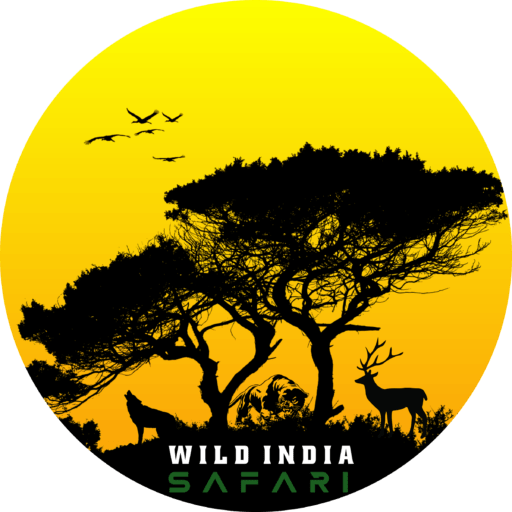
PANNA NATIONAL PARK
INTRODUCTION
Panna National Park is a hidden gem located in the heart of India, in the state of Madhya Pradesh. Panna is the 5th Tiger Reserve in the state of Madhya Pradesh. The park covers an area of 542.67 square kilometers and is home to a diverse range of wildlife. The most famous inhabitants of the park are the tigers, which have made a remarkable comeback in recent years.
Panna National Park is situated on the banks of the River Ken and has a rich history that dates back to ancient times. The park is believed to have been a hunting ground for the Maharajas of Panna, who ruled the region in the 17th century. The park was declared a wildlife sanctuary in 1981 and was subsequently upgraded to a national park in 1982.
HISTORY OF PANNA NATIONAL PARK
Panna National Park boasts a fascinating history intertwined with ancient civilizations, royal legacies, and cultural heritage.
Early Inhabitants
The park’s region was once home to several ancient civilizations, including the Gond tribe and the Chandela dynasty.
The Gond Tribe
The Gonds, who inhabited the region for centuries, had a deep connection with nature and considered the forest as sacred. They believed that their gods resided in the forests and worshipped them through traditional ceremonies and rituals. The Gonds lived in harmony with nature and the wildlife, which helped preserve the region’s biodiversity.
Chandela Dynasty
The region was later ruled by the Chandela dynasty, which was known for its love of art and architecture. The Chandela dynasty built several magnificent temples, including the famous Khajuraho temple complex, which is located just a few kilometers from Panna National Park. The Khajuraho temples are known for their intricate carvings and sculptures, depicting various gods and goddesses, animals, and scenes from everyday life.
The Diamond Connection
The region around Panna was also known for its diamond mines, which were first discovered by the Gonds. The region’s diamonds were highly prized and were used by the Chandela dynasty to decorate their temples and other buildings.
Establishment as a National Park
The park’s rich cultural heritage and history, combined with its stunning landscapes and diverse wildlife, make it a popular destination for tourists from all over the world.
Flora in PANNA National Park
Panna National Park is a botanical treasure trove, featuring a wide variety of plant life that contributes to the park’s vibrant ecosystem.
Types of Vegetation
The park’s flora is characterized by dry deciduous forests, with teak, sal, and bamboo being the dominant species. These forests provide a lush canopy and are essential for the survival of the park’s wildlife.
Unique Plant Species
Among the park’s unique plant species are the flame of the forest, Indian ghost tree, and the rare Diospyros melanoxylon, known locally as tendu, which is used to make beedi (traditional Indian cigarettes).
Fauna in PANNA National Park
The diverse fauna of Panna National Park is one of its biggest attractions, drawing wildlife enthusiasts and photographers from all over the world.
Mammals:
The park is home to a variety of mammals, including tigers, leopards, sloth bears, Indian wolves, and spotted deer. The successful tiger reintroduction program has made Panna a significant spot for tiger sightings.
Birds:
Birdwatchers will find paradise in Panna, which boasts over 200 species of birds. Notable species include the Indian vulture, red-headed vulture, and the critically endangered gharial.
Reptiles:
Reptiles like the Indian python and various species of lizards and amphibians, including frogs and toads, are also part of the park’s rich biodiversity.
Visitor Experience
Beyond its flora and fauna, Panna National Park offers several attractions that enhance the visitor experience.
Jungle Safaris
Jungle safaris are a major draw, allowing visitors to explore the park’s diverse habitats and spot wildlife in their natural settings.
Ken River Boat Rides
The Ken River, which flows through the park, offers boat rides that provide a unique perspective of the park’s landscape and wildlife. These rides are perfect for spotting crocodiles and a variety of bird species.
Pandav Falls and Caves
The picturesque Pandav Falls and Caves are another highlight. According to legend, the Pandavas from the Mahabharata spent part of their exile here. The falls and caves offer a serene environment and stunning views.
How to Get There
Panna National Park is accessible by air, train, and road, making it a convenient destination for travelers.
By Road
Panna is well-connected by road, with regular bus services and taxis available from nearby towns and cities. The drive to Panna offers scenic views of the Indian countryside.
Satna : Panna is 100 km from Satna
Khajuraho : Panna is 25 km from Khajuraho
By Train
- Satna Station: The nearest railhead, 100 km from the park.
- Khajuraho Station: Another convenient railhead, 25 km away.
By Flight
The nearest airport is Khajuraho, about 25 kilometers from the park. Regular flights connect Khajuraho to major cities like Delhi and Varanasi.
Best Time to Visit
The best time to visit Panna National Park is from October to June. Here’s a seasonal breakdown:
- October to March: The weather is pleasant, making it ideal for safaris and wildlife sightings. This period also offers lush greenery post-monsoon.
- April to June: These months are the best for spotting the Royal Bengal Tigers. The vegetation is dry, and the extreme heat draws animals to water sources, increasing the chances of sightings
DETAILED ITINERARY FOR PANNA TOUR
Day 1: Satna to Panna
Arrival at Satna -
Your adventure begins at Satna Railway Station, where you will meet our friendly and knowledgeable representative at 09:00 hrs. This is the starting point of a journey that promises excitement, relaxation, and a deep connection with nature. Our representative will ensure that all your needs are met, providing a smooth transition from the hustle and bustle of city life to the serene wilderness of Panna.
Journey to Panna National Park -
The drive from Satna to Panna National Park spans approximately 120 kilometers, taking about Two hour. This journey by surface is an experience in itself. As you leave the urban landscape behind, the scenery gradually transforms into a more rural setting, with fields, small villages, and patches of forest dotting the horizon. The road is smooth, and the drive is comfortable, allowing you to soak in the changing landscapes as you approach your destination.’
Checking into the Lodge -
Upon arrival at Panna National Park, you will check into lodge that offers both comfort and a close connection to nature. The lodge is designed to blend seamlessly with its surroundings, featuring eco-friendly architecture and modern amenities. Expect spacious rooms with large windows that open to views of the forest, a cozy lounge area, and a dining hall serving delicious meals. The lodge also offers guided nature walks, a swimming pool, and a well-stocked library for your leisure.
After check-in, it’s time to enjoy a hearty lunch at the lodge. The menu typically includes a mix of local delicacies and continental dishes, ensuring there’s something for every palate. This meal is crucial as it fuels you for the exciting afternoon safari that lies ahead. With a satisfied appetite and the anticipation of what’s to come, you’re ready to venture into the wild.
Afternoon Safari -
The highlight of any safari in Panna is the chance to spot the majestic Bengal tiger. These elusive creatures are a symbol of India’s wildlife heritage and encountering one in the wild is a memory you’ll cherish forever.
While tigers are the star attraction, Panna is also home to a variety of other wildlife. Leopards, often seen basking on rocky outcrops, are another predator that commands attention. The park’s rivers and lakes are inhabited by the endangered gharial and mugger crocodiles, providing a unique aquatic contrast to the terrestrial wildlife. Birdwatchers will be delighted by the array of species that call Panna home, including vultures, kingfishers, and parakeets.
Evening at the Lodge -
After an exhilarating day in the wild, dinner at the lodge is a time to unwind and reflect on your experiences. The lodge’s chefs prepare a delightful spread that often includes local dishes made with fresh, seasonal ingredients. This is an opportunity to taste the flavors of Madhya Pradesh, from spicy curries to sweet desserts, all served in a cozy, rustic setting.
The evening at the lodge is your time to relax and recharge. Whether you choose to curl up with a book, enjoy a quiet conversation by the fire, or simply listen to the sounds of the forest, this is a peaceful end to your first day in Panna. The comfortable beds and the soothing sounds of nature ensure a restful night’s sleep, preparing you for another day of adventure.
Day 2: Morning and Afternoon Safaris
Morning Safari -
Start your day with an early morning Jeep safari. The crisp morning air and the possibility of spotting wildlife make it an exhilarating experience.
Lunch at the Resort -
Return to the resort for a hearty lunch. Share your morning adventures with fellow guests and exchange stories
Afternoon Safari -
The afternoon safari provides another chance to explore different parts of the park. Each safari is a unique journey with new surprises.
Day 3: Final Safari and Departure
Morning Jeep Safari -
The final morning safari is a poignant experience. Every sight and sound feels precious as you prepare to bid farewell to Panna.
Return to Satna -
Embark on your final Jeep safari in the park. Make the most of this last opportunity to immerse yourself in the wild.
After the morning safari, return to the lodge for breakfast. Then, drive back to Satna Railway Station to catch Train home or to your next destination.
Tour Inclusion
-
Accomodotion in Tadoba on Double Sharing Basis with all Meals
-
04 Exclusive Gypsy Safari
-
All Safari Permit Charges & Gypsy Charges Included
-
Expert Guide & Driver
-
Assistance Throughout Tour
-
All Land Transfer in Air Conditioned Innova / Crysta / Ertiga
Tour Exclusion
-
Transfer from home to home
-
Lens and camera charges.
-
Mobile Phone is Ban in Tadoba
-
Any personal orders and laundry services.
-
Alcoholic beverages and package drinking water
-
Special orders for food by the client
FAQ'S
for PANNA Tour
The best time to visit is between October and June, with peak wildlife sightings from April to June.
Comfortable clothing, sturdy shoes, a hat, sunscreen, binoculars, and a camera are essential for a safari.
Yes, safaris are safe when conducted with experienced guides and following park regulations.
A minimum of 2-3 days is recommended to fully explore Panna National Park and experience multiple safaris.
GUEST TESTIMONILAS
With 100% genuine reviews, you can read them here or on Google Maps.



